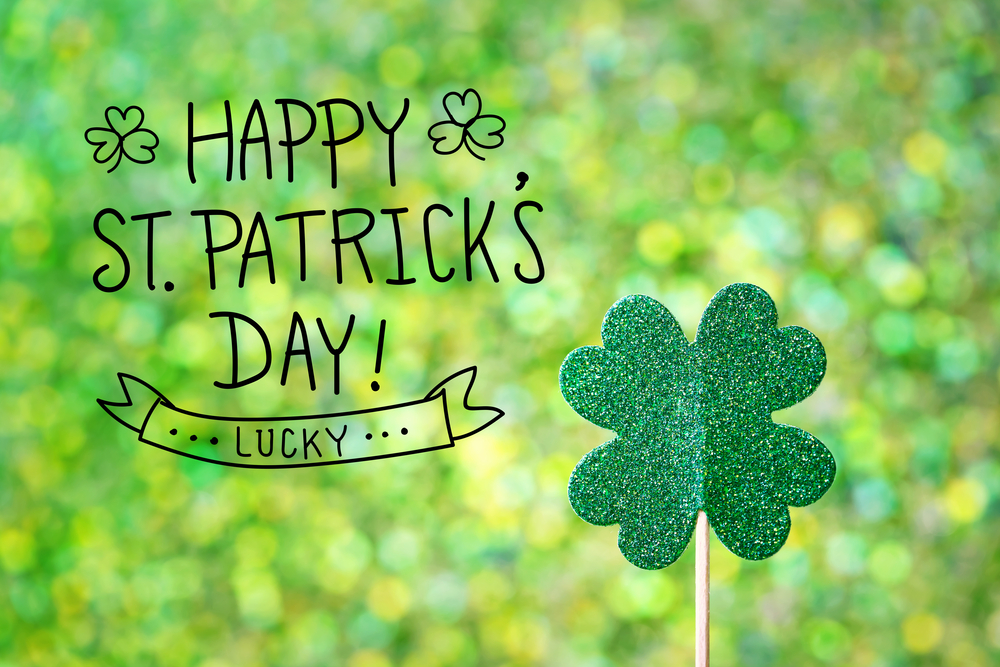
Explore how St. Patrick’s Day celebrations have evolved over time, starting as a religious feast day in early 17th century Ireland honoring Saint Patrick. Initially centered around church services and traditional Irish feasts, the holiday has transformed into a global celebration of Irish culture, marked by parades, green attire, music, dancing, and culinary delights like corned beef and cabbage. From its origins to modern-day festivities, St. Patrick’s Day showcases the vibrant tapestry of Irish heritage, appealing to people around the world with its rich history and cultural significance.
Origins of St. Patricks Day
St. Patrick’s Day, celebrated annually on March 17th, traces its origins back to the early 17th century in Ireland. This day commemorates Saint Patrick, the patron saint of Ireland, known for bringing Christianity to the country. It has evolved from a religious feast day to a global celebration of Irish culture and heritage. The holiday holds significance for those with Irish ancestry and those who simply want to partake in the festivities.
Initially, St. Patrick’s Day was observed as a religious holiday in Ireland, marked by attending church services and feasting on traditional Irish foods. Over time, it transformed into a more secular celebration, incorporating parades, music, dancing, and the wearing of green attire. The color green became synonymous with the holiday due to Ireland’s lush landscape, the shamrock’s significance in Irish culture, and the legend that Saint Patrick used it to explain the Holy Trinity. Today, people worldwide join in the merriment, embracing the spirit of unity and belonging that St. Patrick’s Day embodies.
Early Religious Observances
Early religious observances of the holiday centered around attending church services and partaking in traditional Irish feasts. St. Patrick’s Day, initially a day of religious significance honoring the patron saint of Ireland, St. Patrick, was commemorated by attending mass to offer prayers and gratitude. This ritual of attending church services symbolized the spiritual aspect of the celebration, emphasizing the importance of faith and devotion to St. Patrick.
Moreover, partaking in traditional Irish feasts was a crucial element of early St. Patrick’s Day observances. These feasts served not only as a time for communal gathering but also as a way to honor Irish heritage and culinary traditions. Traditional dishes like corned beef and cabbage were commonly enjoyed during these feasts, highlighting the cultural significance of food in Irish celebrations.
Incorporation of Festive Traditions
Incorporating festive traditions into St. Patrick’s Day celebrations has played a pivotal role in transforming the holiday into a vibrant and culturally rich event over the years. The integration of customs like wearing green attire, parades featuring elaborate floats, traditional Irish music, and dances such as the lively jig and reel have added layers of excitement and connection to Irish heritage. These festive elements create a sense of belonging and unity among participants, fostering a shared cultural experience.
Moreover, the inclusion of culinary delights such as corned beef and cabbage, Irish soda bread, and hearty stews not only tantalizes taste buds but also symbolizes the rich culinary history of Ireland. These traditional dishes bring people together, encouraging communal dining and celebration.
Additionally, the practice of dyeing rivers, fountains, and even beer green has become a fun and recognizable symbol of St. Patrick’s Day festivities worldwide. This playful tradition adds a whimsical touch to the celebrations, inviting people of all backgrounds to join in the merriment and embrace the spirit of the holiday.
St. Patricks Day in America
The celebration of St. Patrick’s Day in America showcases a vibrant fusion of Irish traditions with American culture, creating a unique and festive experience for communities across the nation. In the United States, St. Patrick’s Day isn’t only a celebration of Irish heritage but has also evolved into a widely embraced cultural phenomenon. Cities like Chicago dye their rivers green, while New York hosts one of the largest St. Patrick’s Day parades in the world, drawing millions of spectators. Throughout the country, people of various backgrounds come together to enjoy the lively atmosphere, adorned in green attire and shamrocks.
Bars and restaurants serve traditional Irish dishes like corned beef and cabbage, and many establishments offer Irish music and dance performances. The day isn’t only about revelry but also serves as a way for communities to connect and celebrate diversity. Families often participate in local parades, children enjoy face painting and crafts, and adults partake in the jovial spirit with a pint of Guinness. St. Patrick’s Day in America has become a cherished day where people of all walks of life can join in the festivities and feel a sense of belonging.
Global Spread of Celebrations
As St. Patrick’s Day gained popularity in America, its festivities spread globally, influencing celebrations in various countries around the world. The Irish diaspora played a significant role in carrying the traditions of St. Patrick’s Day to different corners of the globe. In places like Canada, Australia, and the United Kingdom, where there are large Irish communities, the holiday is celebrated with parades, green attire, and traditional Irish music and dances.
In recent years, countries like Japan, Singapore, and Argentina have also embraced St. Patrick’s Day, adapting the celebrations to incorporate their own cultural elements. For example, in Tokyo, you can find festivals with a mix of Irish and Japanese influences, showcasing the universal appeal of the holiday. This global spread of St. Patrick’s Day highlights the power of cultural exchange and the way traditions can evolve and adapt in new environments while still maintaining their essence.
Whether you’re in Dublin, New York, or Tokyo, celebrating St. Patrick’s Day can make you feel connected to a worldwide community that values heritage and shared festivities.
Commercialization and Modern Influences
Commercialization and modern influences have transformed the traditional celebrations of St. Patrick’s Day into a vibrant and dynamic spectacle that reflects contemporary trends and consumer interests. In recent years, the holiday has become a commercialized event with businesses capitalizing on the festive spirit by offering themed products such as green clothing, accessories, and decorations. This commercial aspect hasn’t only fueled the economy but also shaped the way people engage with the holiday.
Moreover, modern influences like social media and technology have revolutionized how St. Patrick’s Day is celebrated. People now share their festivities online, creating a sense of global community and allowing individuals to partake in the celebrations regardless of their physical location. This interconnectedness has further popularized the holiday and expanded its reach beyond cultural boundaries.
Additionally, the influence of popular culture, such as movies, music, and television, has played a significant role in shaping modern St. Patrick’s Day celebrations. These elements have added new dimensions to the holiday, blending traditional customs with contemporary interpretations, creating a rich tapestry of celebration that appeals to a wide audience.
Evolution of Parades and Festivities
Amidst the evolution of St. Patrick’s Day celebrations, the parades and festivities have undergone significant transformations reflecting the changing cultural landscape and societal norms. Originally, St. Patrick’s Day parades were a way for Irish immigrants to display pride in their heritage while also asserting their presence in their new communities. Over time, these parades have grown in scale and popularity, becoming major events in cities across the globe. Today, St. Patrick’s Day parades feature elaborate floats, marching bands, dancers, and cultural performances that celebrate Irish traditions.
Festivities surrounding St. Patrick’s Day have also evolved, with pubs and restaurants offering special menus, green-themed parties, and live music performances. The holiday has become a time not only to honor Irish culture but also to come together with friends and family in a festive atmosphere. In recent years, there’s been a shift towards more inclusive celebrations, welcoming people of all backgrounds to join in the merriment and enjoy the sense of community that St. Patrick’s Day brings.
Cultural Significance of Green
Green holds a deep cultural significance in the context of St. Patrick’s Day celebrations, symbolizing Ireland’s lush landscapes and the country’s rich history and traditions. The vibrant color green is closely associated with the Emerald Isle, reflecting the rolling hills, verdant fields, and majestic cliffs that characterize Ireland’s natural beauty. As you don your green attire on St. Patrick’s Day, you aren’t only paying homage to the patron saint of Ireland but also immersing yourself in the spirit of the Irish landscape.
Beyond its visual appeal, green also represents rebirth and renewal, echoing the arrival of spring and the promise of new beginnings. In Irish folklore, green is linked to luck and prosperity, embodying the hope for a bright future. By embracing the color green during St. Patrick’s Day festivities, you’re connecting with centuries-old traditions and celebrating the enduring spirit of Ireland.
Contemporary St. Patricks Day Celebrations
In the contemporary landscape, St. Patrick’s Day celebrations have evolved into dynamic and inclusive events that showcase the cultural vibrancy and diversity of Irish heritage. Cities across the globe host parades, festivals, and events that bring people together to celebrate Irish culture. These celebrations often feature traditional Irish music, dance performances, and culinary delights like corned beef and cabbage. Green, a color historically associated with St. Patrick’s Day, continues to play a prominent role in contemporary celebrations, with many participants donning green attire and accessories to honor the occasion.
Moreover, modern St. Patrick’s Day festivities go beyond traditional customs, incorporating elements from various cultures to create a more inclusive and diverse celebration. This evolution reflects a broader societal shift towards multiculturalism and acceptance. Today, people of all backgrounds come together to partake in the joyous festivities, fostering a sense of unity and belonging within communities. Overall, contemporary St. Patrick’s Day celebrations serve as a vibrant tribute to Irish heritage while embracing cultural diversity and inclusivity.
Frequently Asked Questions
What Is the Significance of the Color Green in St. Patrick’s Day Celebrations?
Green in St. Patrick’s Day celebrations symbolizes Ireland’s lush landscapes, shamrocks, and folklore. It represents rebirth, hope, and Irish pride. Wearing green honors St. Patrick, the patron saint, and is a global symbol of Irish identity and unity.
How Has Technology and Social Media Impacted the Way St. Patrick’s Day Is Celebrated Today?
In today’s celebrations, technology and social media have revolutionized St. Patrick’s Day. People use platforms to share festive moments, connect globally, and organize virtual events. This digital shift has made the holiday more accessible and interactive.
Are There Any Lesser-Known Cultural Traditions or Rituals Associated With St. Patrick’s Day?
Discover lesser-known St. Patrick’s Day traditions like “drowning the shamrock,” where a shamrock is placed in a drink and then consumed, or the tradition of wearing crosses made of wheat to ward off evil.
How Have Environmental Concerns Influenced the Way St. Patrick’s Day Is Celebrated in Modern Times?
In modern times, environmental concerns have shaped St. Patrick’s Day celebrations by promoting eco-friendly practices like using biodegradable decorations, reducing waste, and advocating for sustainable activities. People are becoming more conscious of their impact on the planet.
How Do Different Countries and Cultures Around the World Incorporate Their Own Traditions Into St. Patrick’s Day Celebrations?
You’ll find diverse traditions globally during St. Patrick’s Day. Countries like the US emphasize parades and green attire, while in Ireland, it’s a religious day. Other nations blend local customs with Irish themes, creating unique celebrations.
Conclusion
As you reflect on the evolution of St. Patrick’s Day celebrations through history, you can see how this holiday has transformed from its early religious observances to a global celebration filled with festive traditions and parades.
The incorporation of commercial influences and modern practices has shaped the way we honor St. Patrick’s legacy today.
From the cultural significance of green to the lively festivities around the world, St. Patrick’s Day continues to evolve and adapt, bringing people together in celebration.










